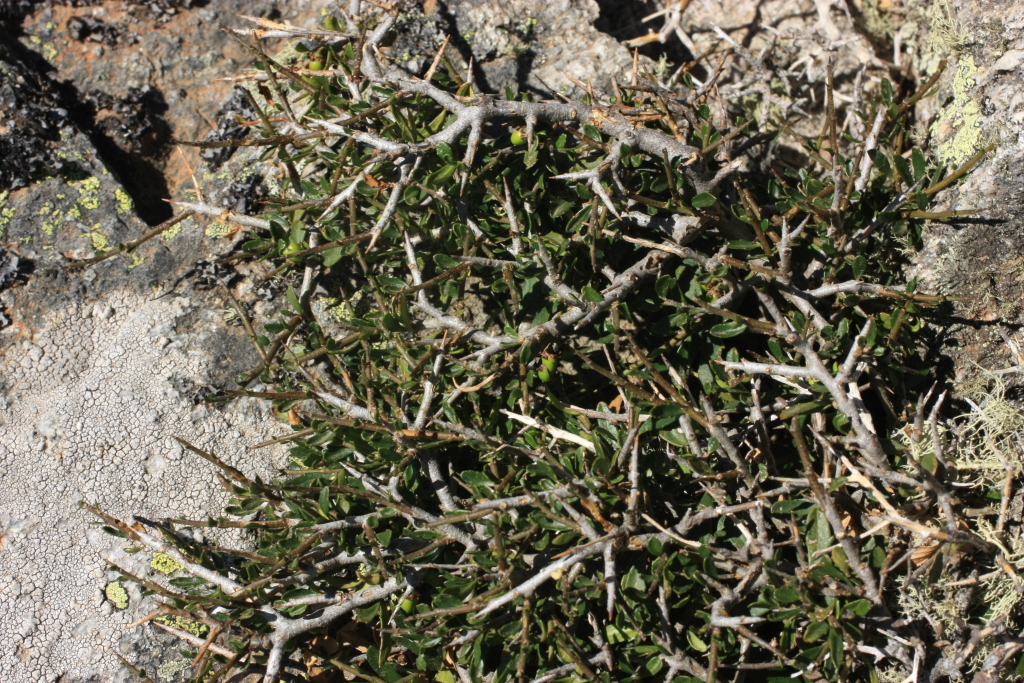Melicytus angustifolius subsp. divaricatus
Stajsic & R.DouglasSpreading, or nearly decumbent or rarely prostrate shrubs 0.3–2 (–4) m high m high. Branchlets glabrous, or rarely, hispidulous, tapering abruptly to thick spines, lateral spines absent; branching angle mostly 60°–85°. Juvenile leaves resembling adults, oblong to obovate, (4–)9–22(–27) mm long, (1.2–)2–3(–4.5) mm wide, solitary or in fascicles of 2–6, subsessile or sessile, margins entire or with 1 or 2 shallow teeth on each margin; apex obtuse; leaves with stomata on both surfaces, glabrous, or with minute, scattered hairs just above base; lateral veins usually not apparent. Inflorescences 1- or 2- (rarely 3-)flowered, axillary to old leaves or their petiole scars, or scattered along stems. Flowers pedicellate with a pair of small bracteoles between base and mid-point; pedicels 1.5–3 mm long; sepals unequal, imbricate, 0.6–2 mm long; corolla campanulate, cream 2.2–3.2 mm long; anthers sessile, obovate, 1.1–1.3 mm long, with a membranous, orange-brown, fimbriate appendage, exceeding anthers by up to 1.3 mm; ovary ovoid, ca 1.5 mm long; style 1–1.5 mm long. Berry ellipsoid to ovoid, 7–8 mm long, 5–7 mm diam., maturing to mottled bluish-grey and white or completely white; seeds 1 or 2, 3–4 mm long, plano-convex in section. Flowers Aug.–Oct.(–Dec. in alps)
Wim, GleP, VVP, GipP, WaP, Gold, CVU, DunT, EGL, EGU, MonT, VAlp. Occurs primarily on basalt-derived soils of the Volcanic Plain west of Melbourne where often associated with exposed natural rock and drystone walls, but also in subalps and alps on soils derived from a variety of parent rock types.
Previously included within M. dentatus (DC.) Molloy & Mabb. Melicytus angustifolius subsp. angustifolius is confined to near-coastal northern Tasmania.
 Spinning
Spinning


